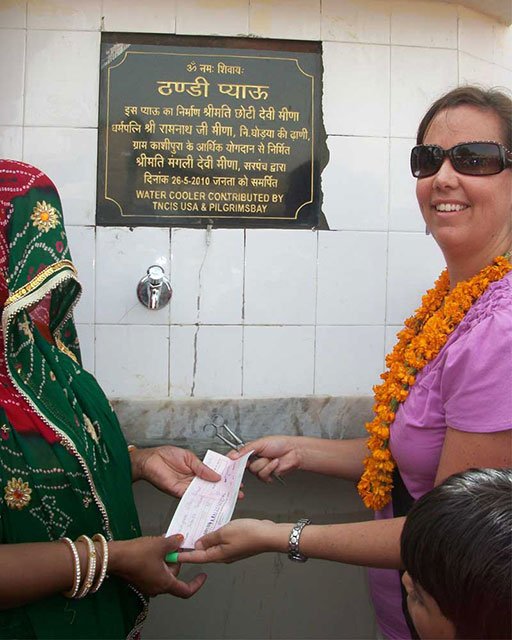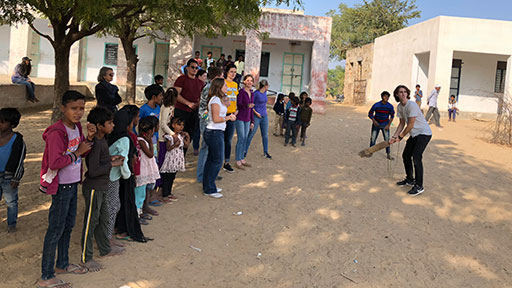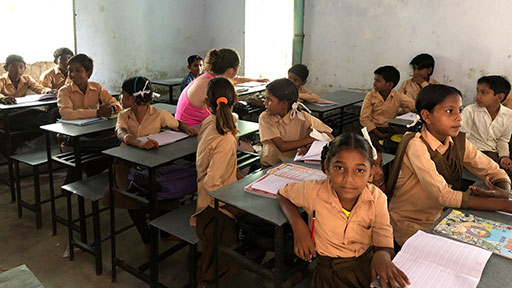
Welcome to our local school
This article discusses:
- By 2020, India’s estimated population will be 1,380,000. Half of India’s population is under 25 years old
- India has made huge progress increasing completion rates for primary school education
- Ikaki Bagh supports our local primary school. Visitors are warmly welcomed and valuable in the steady progress we are making working with the school
Population Growth
India’s population is growing steadily. By 2020, the estimated population is 1,380,000. This puts India as the second most populous country after China.
44% of this figure will be under the age of 25.
If current trends continue, India’s estimated population by 2030 will be 1,540,000. This also means it will have overtaken China to become the most populous country on Earth.
Education System
India’s vast education system has been influential in the country’s rising economic growth.
The education system is made up of a variety of schools: Government, Government aided private schools, private schools (unaided), National Schools and International Schools. Home schooling is legal in India but uncommon
More than 95% of children now attend lower and upper primary school (6-14 years). Importantly there has been a major increase in the attendance of girls to achieve this figure. 80% of schools for this age group are government run. The percentage is higher again for rural based schools.
The Indian Constitution dictates education is compulsory and free for students in this age group who attend government schools. Education Policy is prepared by the Centre Government and State Governments at national and state levels.
Over 6 million teachers work in the primary school education sector.
High school (14-16 years) and higher secondary school (17-18 years) participation rates are also improving. However, many children still complete their education after completing upper primary school.
Successful completion of secondary schooling is based on passing examinations. This is a pre-requisite to going on to degree level studies at tertiary institutions.
National Curriculum
Education Policy is prepared by the Centre Government and State Governments at national and state levels.
A National Curriculum Framework was established in 2005. It provides guidance for setting syllabus, teaching practice and the development of textbooks.
There are many practical challenges setting a syllabus for schools in rural India. Many regions experience entrenched social disadvantage. Facilities are often basic and teacher/student ratios higher than most city schools.
Government schools in this category focus on improving literacy rates in the preferred local language. This most commonly Hindi. A level of basic English is also taught.
Science and Maths is also taught.
A high priority is creating a learning environment that increases participation rates by girls.

Ikaki Bagh’s support for our local school
In December, 2018 we wrote a blog ‘Working with our Local School’. This blog profiles our Local Upper Primary Middle school and the ways we are trying to support it.
Working in partnership with the Principal and the teachers is critical to our support. Working together involves joint decision-making and guards against any risks of creating a culture of dependency by the School.
Visits to the school by tourists are an important element of our support for the school.
Historically, children such as these have been confined to their local community virtually ignored by the wider world.
Visits by tourists provide school children with direct encounters with dignity and respect. In turn, visitors are introduced to children who revel naturally with people different to themselves. They exude enthusiasm despite their lack of material goods, let alone anything like luxuries.
We call these visits an opportunity for tourists to experience “the real India”.
This year, the school enjoyed visits from tourists from Italy, the Netherlands, France, Span, England, the United States, Canada and Australia.
Visitors comment how joyful and genuine the children appear. While their school is extremely modest as far as facilities is concerned, the children strive to do well. Their pride in their appearance and vitality for life is infectious.
The children also lack sports and play equipment. Instead, they make their own simple toys, such as kites, from discarded materials. They are also highly inventive with games of play such as ‘tag’ enjoyed by children worldwide.
Teaching conditions are slowly improving. For the first time this year, we supported the school providing desks and seating for the older students. Improving the basic comforts for the children increased their capacity to concentrate and engage with their teachers.

Highlights from the last twelve months
Other highlights from our work with the school over the last twelve months include:
- A new classroom that can seat about 40 children was constructed
- Regular supplies of small education items such as notebooks, crayons and pencils were donated by visitors
- a financial donation to buy world maps for all classrooms
- Woollen cloths for more than 120 children
- Clean drinking facility along with a water-cooling machine.
- Tree plantation over 100 trees
- Distribution of sports equipment’s to children.

